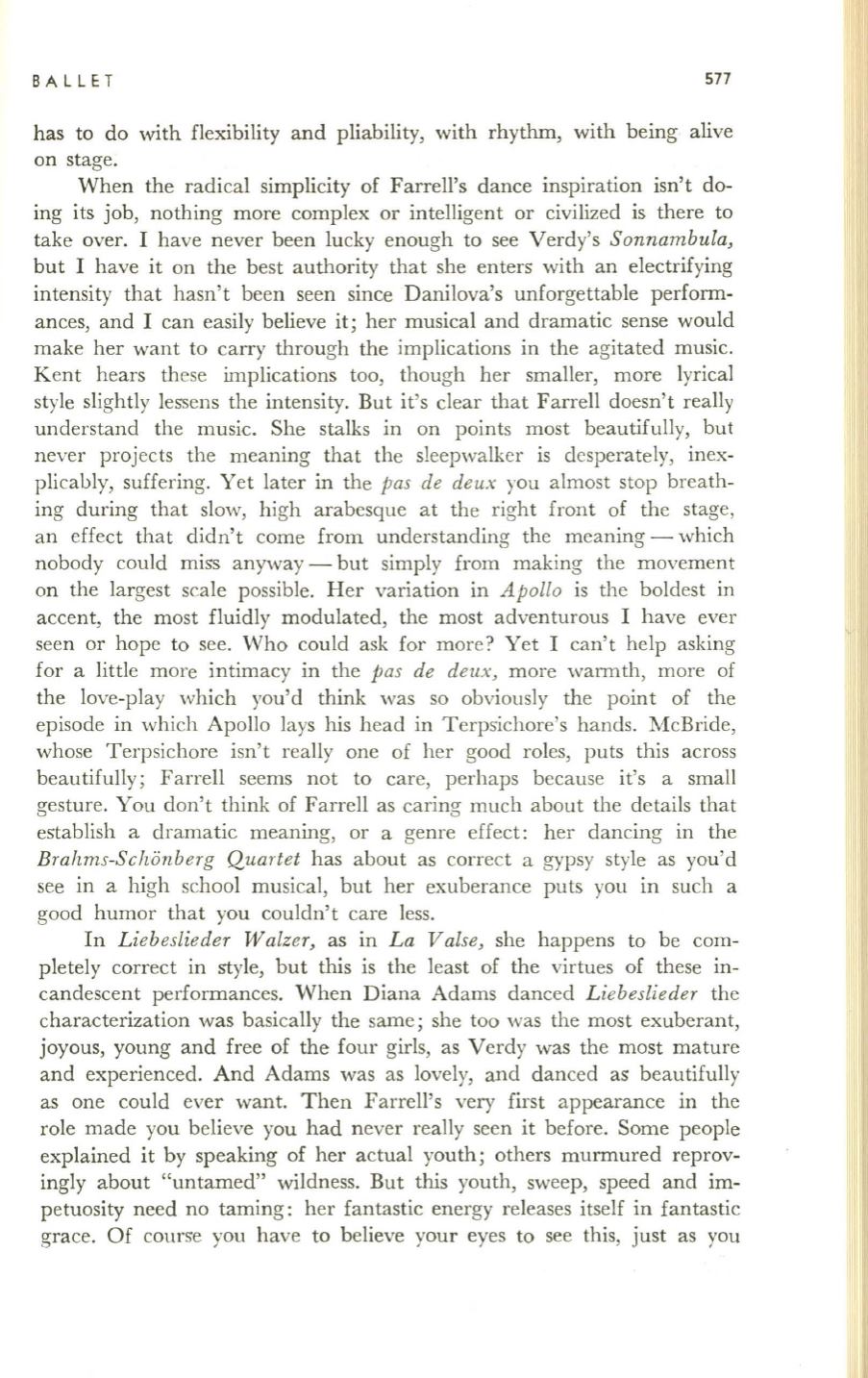
BALLET
577
has to do with flexibility and pliability, with rhythm, with being alive
on stage.
When the radical simplicity of Farrell's dance inspiration isn't do–
ing its job, nothing more complex or intelligent or civilized is there to
take over. I have never been lucky enough to see Verdy's
Sonnambula,
but I have it on the best authority that she enters with an electrifying
intensity that hasn't been seen since Danilova's unforgettable perform–
ances, and I can easily believe it; her musical and dramatic sense would
make her want to carry through the implications in the agitated music.
Kent hears these implications too, though her smaller, more lyrical
style slightly lessens the intensity. But it's clear that Farrell doesn't really
understand the music. She stalks in on points most beautifully, but
never projects the meaning that the sleepwalker is desperately, inex–
plicably, suffering. Yet later in the
pm de deux
you almost stop breath–
ing during that slow, high arabesque at the right front of the stage,
an effect that didn't come from understanding the meaning - which
nobody could miss anyway - but simply from making the movement
on the largest scale possible. Her variation in
Apollo
is the boldest in
accent, the most fluidly modulated, the most adventurous I have ever
seen or hope to see. Who could ask for more? Yet I can't help asking
for a little more intimacy in the
pas de deux,
more warmth, more of
the love-play which you'd think was so obviously the point of the
episode in which Apollo lays his head in Terpsichore's hands. McBride,
whose Terpsichore isn't really one of her good roles, puts this across
beautifully; Farrell seems not to care, perhaps because it's a small
gesture. You don't think of Farrell as caring much about the details that
establish a clramatic meaning, or a genre effect: her dancing in the
Brahms-Sclronberg Quartet
has about as correct a gypsy style as you'd
see in a high school musical, but her exuberance puts you in such a
good humor that you couldn't care less.
In
LiebesZieder WaZzer,
as in
La Valse,
she happens to be com–
pletely correct in style, but this is the least of the virtues of these in–
candescent performances. When Diana Adams danced
Liebeslieder
the
characterization was basically the same; she too was the most exuberant,
joyous, young and free of the four girls, as Verdy was the most mature
and experienced. And Adams was as lovely, and danced as beautifully
as one could ever want. Then Farrell's very first appearance in the
role made you believe you had never really seen it before. Some people
explained it by speaking of her actual youth; others murmured reprov–
ingly about "untamed" wildness. But this youth, sweep, speed and im–
petuosity need no taming: her fantastic energy releases itself in fantastic
grace. Of course you have to believe your eyes to see this, just as you


